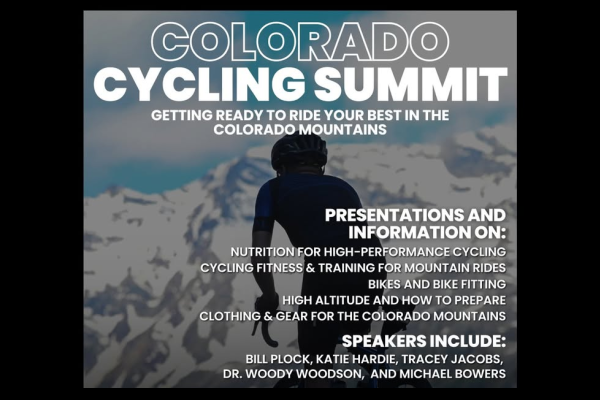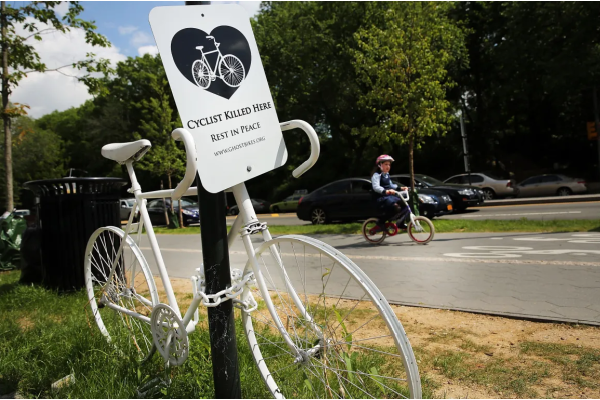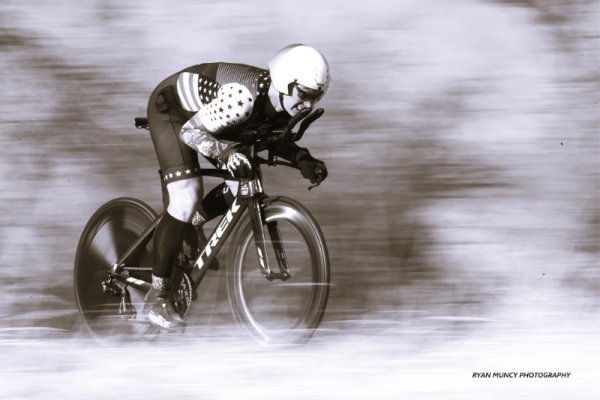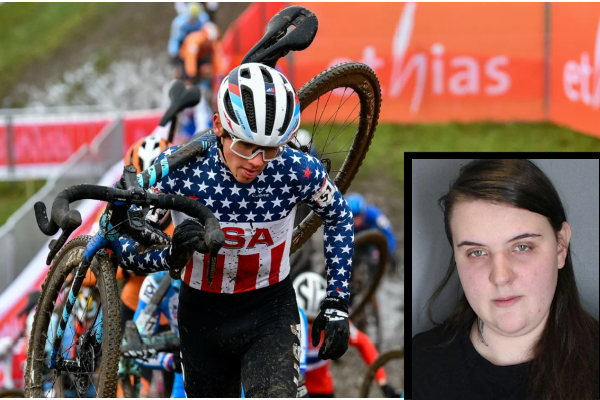
The First Colorado Cycling Summit
Cycling Season is here, and so is a long list of epic rides throughout the state and surrounding states. Are you ready? Join Avid Cyclist, and other co-hosts for the

by: Gary Robinson, editor
Improving your overall fitness brings a number of key benefits to your cycling: you’ll enjoy your riding way more, you’ll see new places because you can go further, and you won’t be last one up the hills, to name just a few.
Read and swallow these 25 fitness tips, follow as many as you can and watch your fitness soar.
The biggest gains are made by improving your diet, working on cardiovascular fitness and strength, and getting plenty of rest. There’s a lot more to it than that, but these are the three key areas.
There are other ways to achieve it though, from Fartlek sessions to cutting out the junk food, banning TV and other devices in the bedroom to perfecting your own recovery smoothie recipe.
Read on for 25 effective ideas on how to improve these three key areas and build your cycling fitness to a whole new level.
As a cyclist, racer, and personal trainer, this where I start with myself and all of my clients, and for good reason— no matter how much training you do, you can’t maximize the results if your diet is rubbish. Your diet is the foundation of your fitness. And with high caloric demands of longer rides, managing that is even more important for anyone who rides a bike.
We won’t lecture you on cutting out alcohol, but we will suggest some improvements that, when combined, can start to add up.
Remember that BMI charts are hopeless for athletic individuals — they’re designed to identify unhealthy weights for the general population.
A body composition monitor is much better for cyclists. Body fat numbers to compare yourself against are 15–18 percent for the average male, 8–10 percent for a well-trained rider, and 4 percent for an elite cyclist.
Try varying between long, easy rides and short, intense ones to optimize your body’s fat-burning ability.
It plays an important role in repairing muscle tissue after training and helps provide shock absorption for feet and organs, thus preventing injury.
There are different types of fat, with solid saturated fats (found in things like butter and animal fat) being the one to avoid. Monounsaturated and polyunsaturated fats that are liquid at room temperature (like olive oil) have multiple health benefits, including lowering cholesterol levels. Avocados, learn to love them.
Your body can only absorb 20g or so at a time though, so snack throughout the day and remember to have a recovery shake or bar immediately after training.
Bear in mind that protein’s only recruited to build muscle when you’re training hard and most people can’t build more than 1kg of lean muscle in a month. So try eating more like Ron Swanson, mix your own protein shakes and get biltong and nuts to graze on throughout the day.
It’s crucial for maintaining your body’s ability to burn fat, rid itself of toxins, and absorb nutrients from food.
I always recommend keeping a water bottle to keep by your side at work and filling it regularly from the water cooler or tap. Rule of thumb: Try to consume 1oz of water for every 2 lbs of your weight, every day.
And remember, when you go for your ride, you will never be penalized for having extra water, but you will be punished for not having enough. Bringing more is better, you can always dump water out at the end…but you can not manufacture it during a long bike ride.
We all know that it abounds in ready meals, fizzy drinks and junk food, and is one of the leading causes of obesity and diabetes. But did you know it can also weaken your body’s immunity system and plays havoc with your energy levels? When you purchase condiments, like catchup, take a look at the added sugars, you will be surprise. Keep away from added sugars.
Natural sweeteners like agave syrup are a much better alternative for your morning coffee and cereal, but it’s even better to wean yourself off entirely.
You want to avoid starve-binge patterns, as these tempt you to indulge in all the wrong things. Plan your snack times so you’re never without food or drink for longer than four hours. Nuts, fruit, yoghurt and dried meat are all good bets.
We don’t mean for longer than a few weeks — it might start to become an obsession — but smartphone apps like MyFitnessPal are quick, easy and intuitive to use and has a database of millions of foods with the macro breakdowns in place for easy tracking.
They can help you get a good idea of what your diet currently looks like and identify areas where you could improve.
Not only are they much higher in sugar and salt, they’ll also give you short energy spikes rather than a gradual release of energy.
A good rule of thumb is to look at what you’re about to eat and ask yourself, “How close to the raw ingredient is it?” For example, a baked potato is obvious, a ready meal lasagna… less so.
Another rule of thumb: Avoid the isles of the grocery store. The parameter of the store has fresh meats, produce, etc. The isles are where the prepared foods and processed foods are.

This is stage two, if you like — stressing your body’s muscles and systems so that they can then rebuild stronger and be more efficient. The key is variety, mixing things up so you don’t get bored or sink into a rut.
How many times have you seen riders start freewheeling as soon as they reach the top of a hill? By drilling your ability to change into a bigger ring as soon as you reach the top, it’ll become second nature, and you’ll have a powerful advantage over other riders that lets you quickly create a gap. Attack!
Hitting the gym’s weights room will quickly improve your power and means you can muscle up climbs that previously left you gasping.
Technique is crucial to avoiding injury, so practice good form and build it up slowly. The best exercise for cyclists is squats, with a barbell on your shoulders, as this works so many of the key muscle groups.
If you need help developing a lifting plan, seek out a personal trainer, either in your gym or on line, preferable one who has cycling experience and understands the physiology of a rider.
Try cyclocross, and your bike handling and pedaling efficiency will improve in leaps and bounds.
Riding off-road in the mud teaches you to spin in perfect circles and how to pull your front wheel over obstacles. It’s bound to improve your general fitness and help you learn to pace your high-intensity efforts.
The cyclocross season typically runs from September into and through December in Colorado. Check out Cycling Colorado to get a full schedule of the the ‘cross races and events through the fall. You will quickly see why it has become so addictive-we all love to play in the mud, don’t we?
They’re not just a hipster fad and can transform your leg strength and help you smash your personal bests. There’s a reason track cyclists are so strong.
By being so ‘connected’ to the bike — there is no freewheel — you’ll quickly learn a smooth, fast cadence. This will strengthen not just your legs but your whole core, glutes and back, laying the foundations for a formidable sprint. And they’re good for riding across town or doing the grocery run, too.
It’s a great way to warm up, get some impact training and high intensity cardiovascular work, and develop muscular endurance in the calves and shoulders.
Aim to keep your head up and stay light and springy on your toes. Don’t jump high over the rope, just elevate yourself enough to clear it and stay relaxed. It’ll take a bit of time to master the technique, but stick with it because it’s a brilliant do-anywhere exercise. For a decent workout, try three x 60 seconds with 30 seconds’ recovery. If you want to get a little more explosiveness, try “double-unders.” These will challenge your power and coordination.
English speakers may find the name amusing (guilty as charged), but it means ‘speed play’ in Swedish, and basically involves adding some intervals into your training.
There’s no specific structure to it, just set yourself some goals like, “I’ll sprint to that lamp post, then rest for 30secs”. You’ll burn more calories, improve your body’s ability to react to changes in tempo, reduce the chances of injury, and keep things interesting.
These cover your full cardio range from resting on the sofa watching TV up to an eye-popping-sprint, and usually number five or six zones.
Most training plans will tell you, “Ride steady in Zone 2 for 5mins” or similar, which basically means you ride at around 65 percent of your maximum heart rate. To work out your maximum heart rate, a rough rule of thumb comes from our sister publication 220 Triathlon: subtract your age from the number 220.
So for a 35-year-old, their maximum heart rate is around 185. This isn’t 100 percent accurate though, there is a more accurate way to finding your max heart rate.
Elite athletes of all stripes swear by them. You’ll discover flexibility you never knew you had, make new friends, improve concentration and breathing, and clear your mind on a regular basis.
Weekly classes can be found all over, but once you’ve mastered the basics, it can be done anywhere. There are also on line subscription yoga apps, like Glo, that have cycling specific yoga courses.
You’ll get to ride in amazing new places with fellow cyclists, soak up some sun, eat fantastic food and concentrate on yourself and your riding for a while. You’ll return home fit and buzzing, relaxed and refreshed. You deserve it.

Now for stage three, giving your body (and mind) the chance to repair itself after the stress you’ve put it through. This can be done in a number of ways, but getting enough sleep is the most important. Eight or nine hours per night is the ideal, if you’re training hard.
Designed to mimic dawn and help your body wake up gradually through light, they’re proven to help trigger the release of cortisol, a hormone which — among other things — helps your body prepare for the day ahead.
We’ve been using a Philips HF3520 throughout the dark winter months and it has truly transformed our mornings. Highly recommended.
Regular sex brings many health benefits, from relieving stress and releasing dopamine to helping you sleep better. While plenty of sportsmen claim that abstaining before a big event helps their performance, there’s no scientific evidence to suggest that sex before an event reduces endurance or speed. But it will almost certainly help you sleep better.
Yes we’re as guilty as anyone of scrolling through Facebook in the dark, but the truth is that the blue light emitted by your favorite iDevice seriously interferes with your body’s production of the sleep-inducing hormone melatonin.
Try reading a cycling book instead, but don’t blame us if you start dreaming of round-the-world adventures, hill climbs or Alpine descents.
There’s a reason pros have their own soigneurs; their healing hands help aching legs recover more quickly and identify any areas of tightness that could develop into injury. You can also do it yourself with a foam roller.
After a race or tough training ride, a gentle spin-down can help flush the muscles, improve circulation, and may actually help the body repair itself more quickly than complete rest. We should add that the science is debated, but many riders find it gives them a psychological edge. You may too.
We’re all familiar with the sensation of being a bit sleepy after a big, satisfying meal, but the truth is that your body has to work super-hard to digest it all. This can mean you don’t sleep as deeply and you won’t wake up feeling refreshed. Likewise, alcohol also interferes with your sleep.
Far from being the preserve of the lazy, a short siesta can have remarkable revitalising powers. It can even be just a 10 minute period of quiet, you don’t need to be fully asleep to benefit either. The ideal length is 15–20 minutes if possible.
Courses like the Headspace series are well-thought-out for busy individuals, demand just 20 minutes of your day, and multiple studies suggest benefits include less stress, fewer negative thoughts, improved social relationships and an improved immune system.

Cycling Season is here, and so is a long list of epic rides throughout the state and surrounding states. Are you ready? Join Avid Cyclist, and other co-hosts for the

By: Brad Tucker I have been practicing law for over thirty-five years, the majority of which has included representing bicyclists who have been hit by drivers who disregarded the safety

April 8, 2025 Propelled by the powerful stories of victim families, SB25-281 includes new mandatory chemical testing clause BOULDER, CO /ENDURANCE SPORTSWIRE/ – The White Line, founded in memory of 17-year-old

Boulder, Colorado- After a week long trial, late Friday evening, a Boulder County jury found Yeva Smilianska guilty of Vehicular Homicide-Reckless Driving in the death of Magnus White. The jury,

The 2025 Karen Hornbostel Memorial Time Trial Series p/b Cobras Cycling Team has entered its second week! Ryan Muncy of Ryan Muncy Photography was there to capture images of a chilly afternoon. Make

By: Gary Robinson, Avid Cyclist Jury selection began Monday morning for the suspect driver accused of striking and killing Colorado teen cyclist Magnus White near his home in Boulder. Yeva